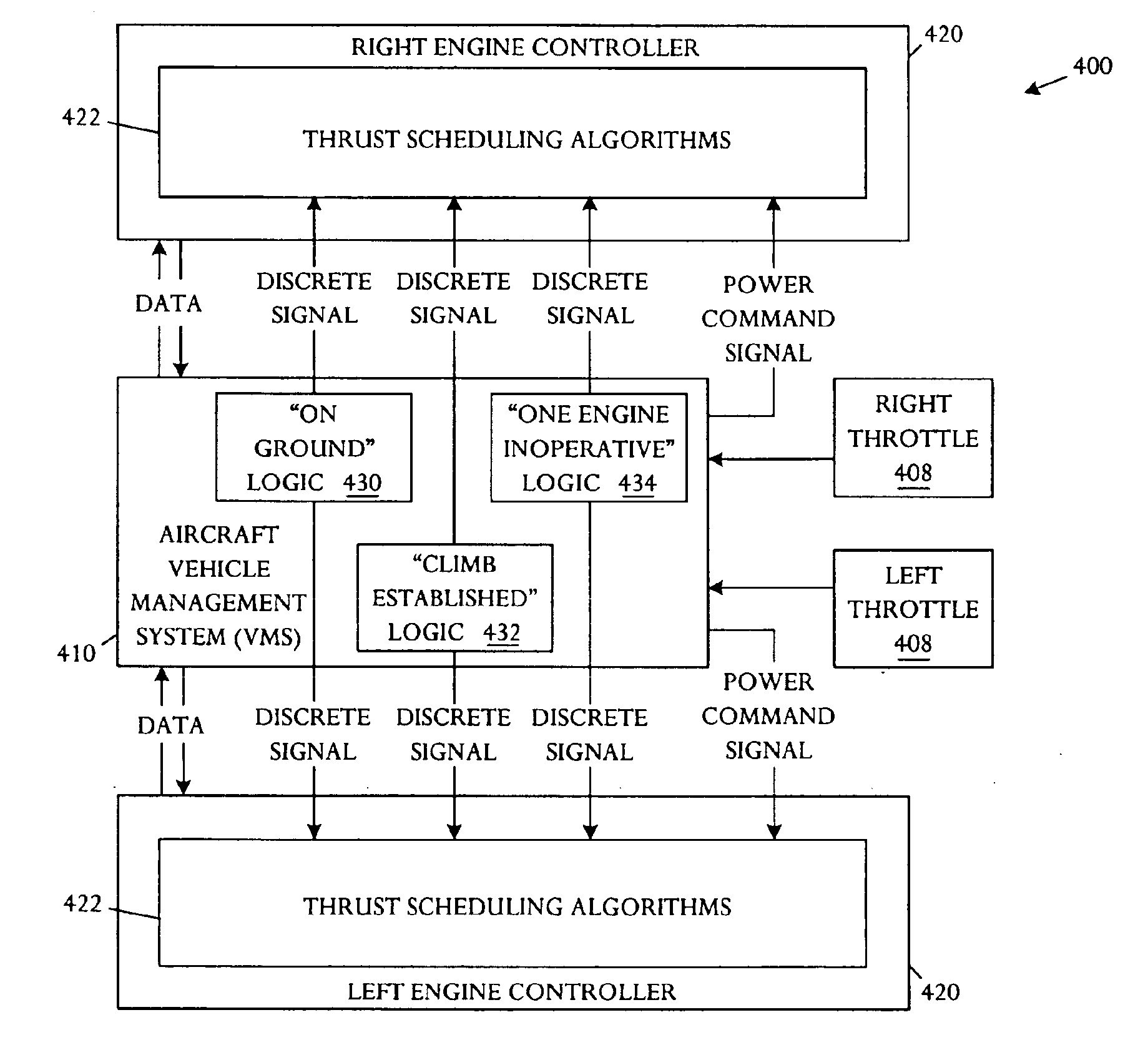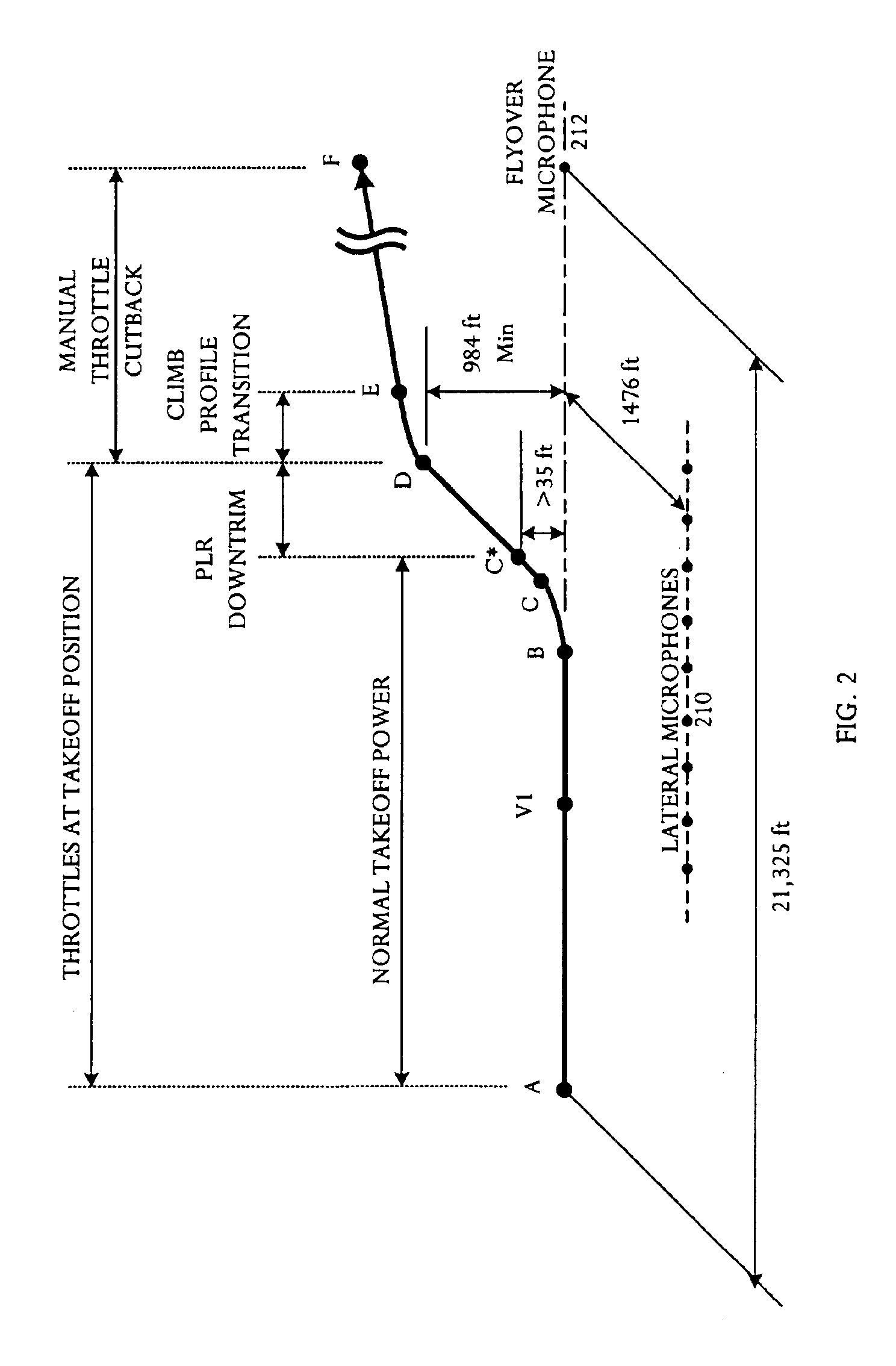Automatic takeoff thrust management system
a technology of automatic takeoff and thrust management, applied in the direction of automatic actuation, process and machine control, instruments, etc., can solve the problem of aircraft noise levels greater than desired, and achieve the effect of reducing or minimizing takeoff nois
- Summary
- Abstract
- Description
- Claims
- Application Information
AI Technical Summary
Benefits of technology
Problems solved by technology
Method used
Image
Examples
Embodiment Construction
[0028]A high performance aircraft has design characteristics that specify excess thrust for all-engine takeoff climb, full thrust for takeoff roll, and full thrust or higher for engine-out takeoff climb. In some embodiments, the high performance aircraft is a supersonic transport aircraft. Use of full takeoff thrust for all-engine takeoff climb can result in higher than desired noise levels. Current Federal Aviation Administration (FAA) airworthiness standards define takeoff procedures where no change in thrust that requires action by the pilot may be made until the airplane is 400 feet above the takeoff surface. An automatic takeoff thrust control system satisfies FAA requirements and reduces community noise exposure. The automatic takeoff thrust management system reduces thrust after climb conditions are established, but, in the event of engine failure, increases thrust to meet FAA engine-out climb specifications.
[0029]Referring to FIG. 1, a schematic block diagram depicts an auto...
PUM
 Login to View More
Login to View More Abstract
Description
Claims
Application Information
 Login to View More
Login to View More - R&D
- Intellectual Property
- Life Sciences
- Materials
- Tech Scout
- Unparalleled Data Quality
- Higher Quality Content
- 60% Fewer Hallucinations
Browse by: Latest US Patents, China's latest patents, Technical Efficacy Thesaurus, Application Domain, Technology Topic, Popular Technical Reports.
© 2025 PatSnap. All rights reserved.Legal|Privacy policy|Modern Slavery Act Transparency Statement|Sitemap|About US| Contact US: help@patsnap.com



